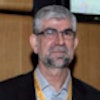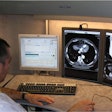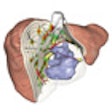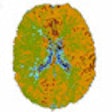VIENNA - French x-ray developer Thales is introducing two new digital detectors at this week's European Congress of Radiology (ECR), one of which represents the company's first foray into detectors based on complementary metal-oxide-semiconductor (CMOS) technology.
The first product is Duet RF, a digital detector designed to perform both general radiography and radiography/fluoroscopy (R/F) studies. By offering a detector that supports both applications, Thales' OEM partners will be able to incorporate them into hybrid systems that don't require end users to maintain two separate rooms, one for static radiography and the other for dynamic R/F work.
Duet RF is based on a Pixium RF4343 detector from Thales' Trixell subsidiary, and the product includes the electronics and software needed to convert raw digital output to medical images. Thales has begun offering conversion software with its products since its acquisition of CMT Technologies of Israel in 2009. Duet is currently available to Thales' OEM partners.
The other new technology on display at ECR 2011 is SiX 650, a 5 x 6-inch CMOS-based digital detector designed for surgical C-arms. CMOS technology has some benefits over the conventional flat-panel digital technology on which the Trixell line is based, such as very good amplification characteristics that support the rendering of images at resolutions close to image intensifiers but at lower radiation doses.
Due to the difficulty in manufacturing CMOS detectors in larger sizes, Thales sees the detectors as being limited to small-format applications such as C-arms for the time being. Thales has already begun shipping prototypes of the detectors and expects to begin production in April














